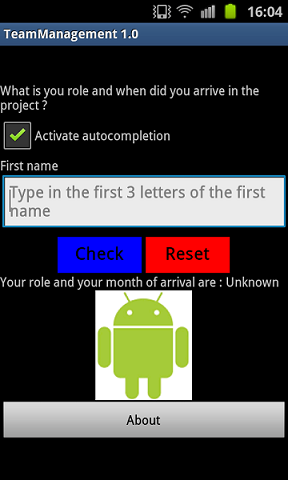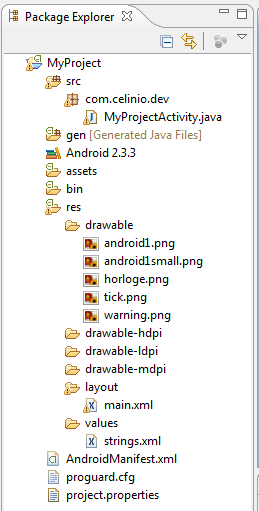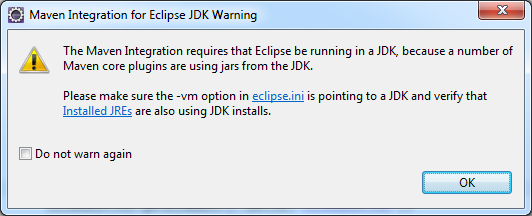I finally got the time to develop my first small Android application.
Technical environment :
– Eclipse Indigo
– Android SDK 2.3.3 (Gingerbread)
– An Android phone with Android SDK 2.3.4
I tried to go a little bit further than the traditional “Hello World” sample.
The application, called TeamManagement, is still a simple one : type in a name of a project member and it will display what his role is and when he arrived in the project. That’s it. I explored some nice features : relative layout, autocompletion, popup, menu at the bottom, show/remove image etc.

The project inside Eclipse has the following structure :
The file /MyProject/res/values/strings.xml is where the name of the application is set.
<string name="app_name">TeamManagement 1.0</string>
I chose to organize the layout programatically, instead of declaratively (main.xml) and created a single activity called MyProjectActivity :

